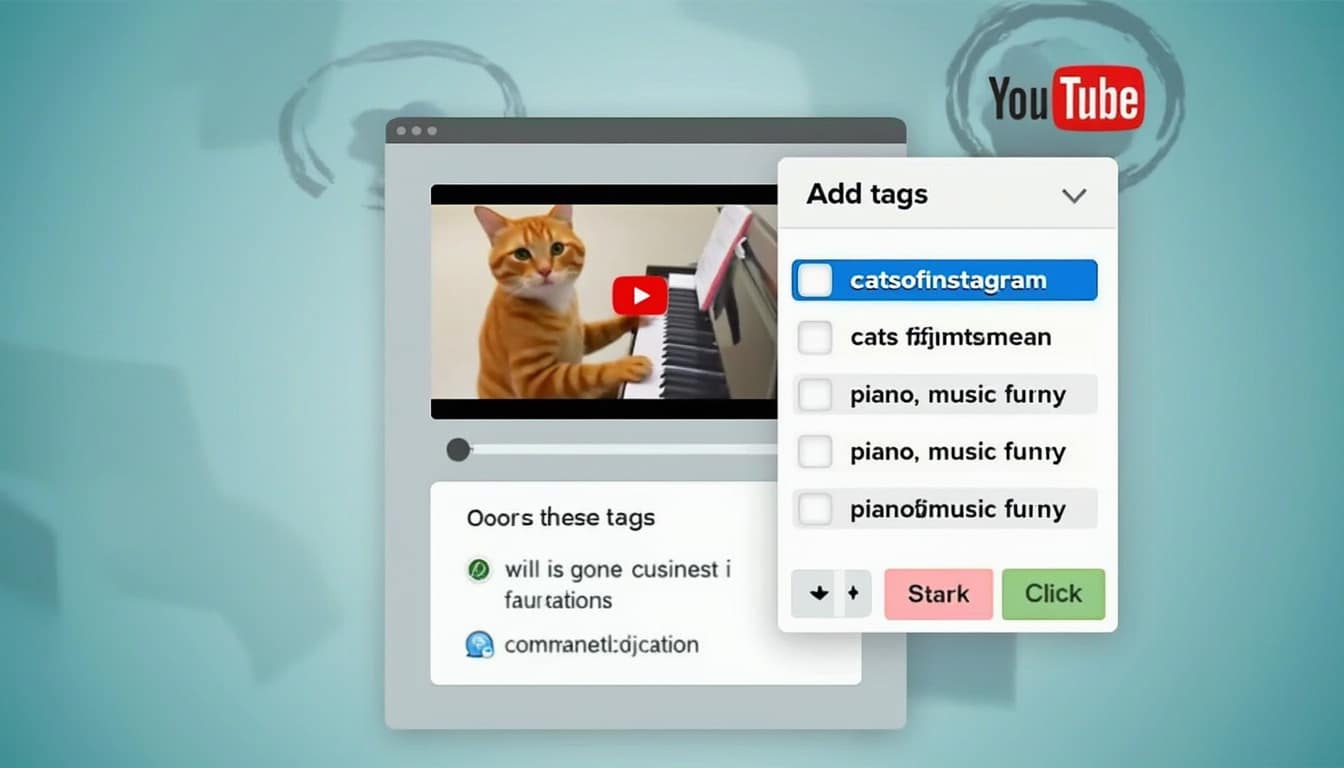When it comes to managing your YouTube channel effectively, understanding the intricacies of video management is crucial. One common question that often arises is whether it is possible to change tags on a YouTube video after it has been published. This detail may seem small, but it can significantly impact a video’s visibility and discoverability on the platform.
YouTube is a massive landscape, with millions of videos vying for viewers’ attention daily. As such, leveraging every opportunity to optimize your content is essential. Tags are one of the tools you can use to help categorize your videos and make them more searchable. However, once a video is live, creators often wonder if altering its tags can lead to increased views.
Understanding the mechanics behind tags and how they influence YouTube’s algorithm can provide you with insights necessary for your content strategy. Tags are not merely decorations; they help YouTube understand the content of your video, which can affect how your video appears in search results and recommended video suggestions. The bottom line is that if you wish to enhance your video performance, knowing how to manipulate tags after publishing is a skill you need to master.
Understanding Tags and Their Importance
Tags essentially serve as keywords associated with your video content. These tags convey important context to YouTube about the subject matter, which influences how the algorithm categorizes and recommends your video to potential viewers. Although YouTube’s algorithm has evolved to emphasize engagement metrics, tags still provide valuable information that helps in aligning video content with audience searches.
For example, if you create a video tutorial on baking chocolate chip cookies, relevant tags might include “baking,” “cookies,” “chocolate dessert,” and so forth. This strategic tagging will help viewers interested in those topics discover your video through search results.
Moreover, successful tagging can also improve your video’s ranking. High-ranking videos tend to receive substantial organic visibility, which can lead to increased viewer engagements and, in turn, more subscribers to your channel. Practicing effective tagging is not only about optimization; it is about presenting valuable content to your audience in an intelligent format.
To learn more about effective tagging strategies for YouTube, visit this resource.
Can You Change Tags Post-Publication?
Yes, it is indeed possible to change your YouTube tags even after your video has been published. YouTube provides creators with the flexibility to edit videos to improve their overall performance. This includes updating tags, descriptions, and thumbnails, among other elements. To do so, simply navigate to your YouTube Studio, select the video you wish to edit, and you will find the option to add or remove tags in the ‘Details’ section of the video settings.
However, it is essential to note that while you can change the tags, it may take some time for YouTube’s algorithm to recalibrate and reflect these changes in search results. Consequently, after updating your tags, patience becomes a valuable necessity.
Strategic Tagging to Boost Visibility
Effectively utilizing tags can vastly improve your chances of ranking higher on search results. It’s not just about stuffing your video with irrelevant keywords. You must strike a balance between controller keywords that describe your video and user intent to optimize your tagging strategy.
Start by conducting keyword research using tools like Google Keyword Planner or YouTube’s built-in analytics. Identify popular search queries related to your content. For instance, if your video is about travel tips for budget-conscious travelers, relevant tags might include “budget travel,” “travel tips,” and “affordable vacations.” Optimizing tag choices based on actual viewer searches is crucial to harnessing the full potential of your tags.
Moreover, it is also advantageous to keep an eye on your competition. Watching how other successful YouTubers in your niche utilize their tags can provide you with new ideas for your own content. Don’t hesitate to borrow concepts but ensure that they resonate with your own unique brand voice. This strategy is pivotal as you grow your channel.
To deepen your understanding of YouTube’s positioning, refer to this article.

Engagement and Impact Post-Tag Changes
Making edits to your tags after your video has been published can yield tangible effects—however, such changes are best coupled with strategic thinking. Post-edit, closely monitor your video’s performance to gauge any noticeable changes in viewership and engagement metrics. Engagement is king in YouTube’s ecosystem, so watch to see if changing the tags leads to increased likes, comments, shares, and overall video performance.
It’s also essential to engage in self-reflection. If a newly tagged video doesn’t yield positive outcomes, reassess your tagging strategy. Perhaps the tags chosen were too broad, or they didn’t align with the content changes you made. Continuous learning and iteration are vital in every aspect of content creation, including tagging strategies. This adaptive mindset will help ensure that your channel grows sustainably.
Advanced Techniques for Tag Optimization
The landscape of YouTube is constantly evolving, so learning how to stay ahead is essential. Apart from just updating tags, consider incorporating a comprehensive tagging strategy that aligns with your overall content plan. This means regularly auditing your older videos and refining the tags based on current trends and analytics.
Use analytics tools to assess which tags are pulling in traffic and which ones are underperforming. This allows you to optimize your older content actively. For example, adjust tags based on seasonal trends or emerging topics within your niche.
Moreover, as your channel grows, the importance of leveraging YouTube Shorts cannot be overlooked. These short videos can introduce new viewers to your long-form content. By tagging your Shorts appropriately, you also enhance the chances of gaining engagement from viewers who prefer quick, informative content. Each new piece of content is an opportunity to create synergy between your tagging strategy across various video formats.
For further insights, make sure to check this referenced article.

Building a Tagging Routine
Developing a routine for managing your tagging is critical. Aim to set aside time once a month to review your video performances. During this time, evaluate how your tags are contributing to your video successes and failures. Are certain tags consistently delivering views while others flop? This data is invaluable for refining your approach.
In addition to routine evaluations, actively seek feedback from your audience. Engage with your community through comments and social media. Ask them if they found what they were looking for and how they stumbled upon your video. This information can provide you with unique insights into what resonates with viewers.
Ultimately, becoming a proficient tag manager on YouTube can significantly enhance your content’s visibility and engagement levels. Stay curious and adaptable, and your channel will reap the rewards of your efforts.
The Final Touches: Implementing Changes Effectively
Once you’ve determined which tags to modify, the last step involves implementing these changes to ensure they are effective in amplifying your video’s presence. Updating tags is not a one-time event; it requires a thoughtful approach that encompasses testing various combinations to see what resonates best with your audience.
Try splitting your tags into primary and secondary categories. Primary tags should directly reflect your video’s main topics, while secondary tags can capture related but broader contexts. For example, if your video is about vegan meal prep, primary tags might include “vegan meal prep ideas,” while secondary tags could cover “meal prep for busy people” or “healthy eating strategies.” This dual approach can cater to wider search inquiries.
Consider experimenting with tags in a systematic way, perhaps by using A/B testing methods to determine which configurations yield the best results.
Learning about effective strategies is essential. Equip yourself by reading valuable information at this link.
